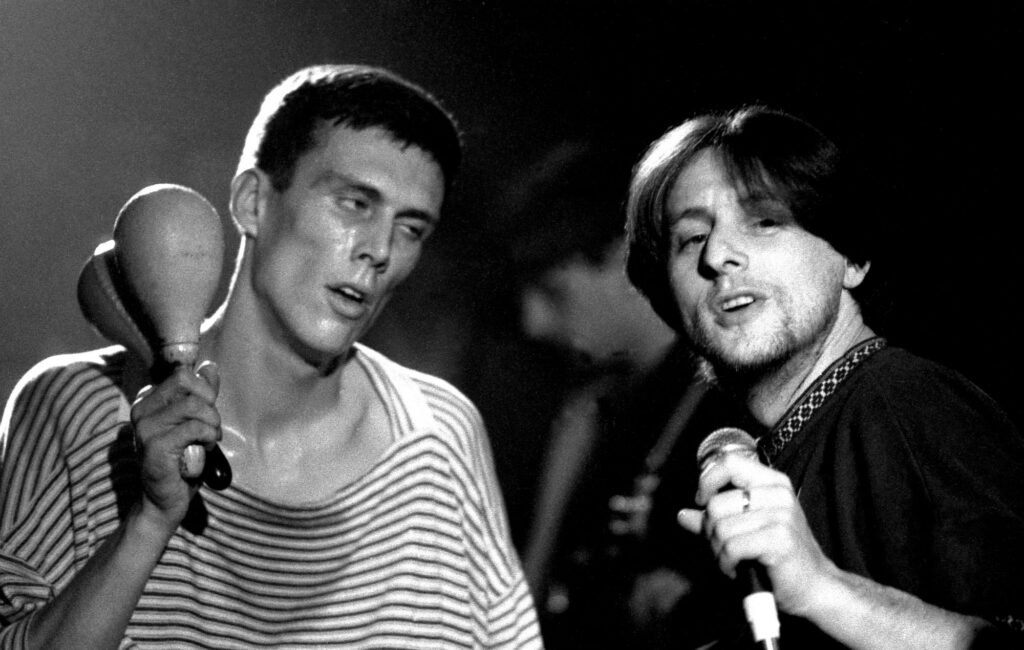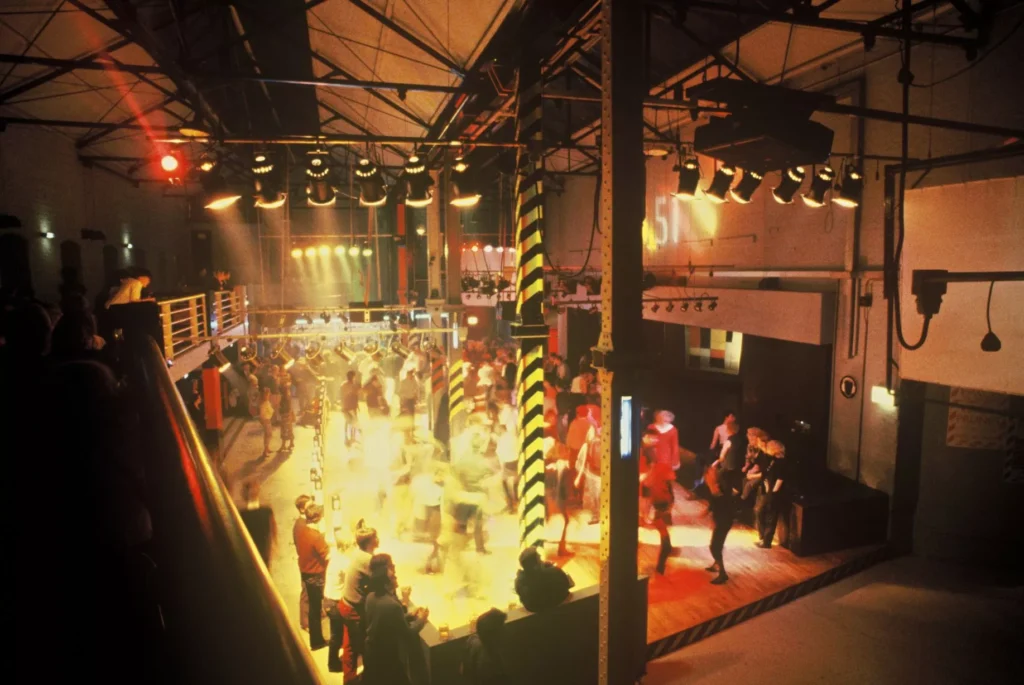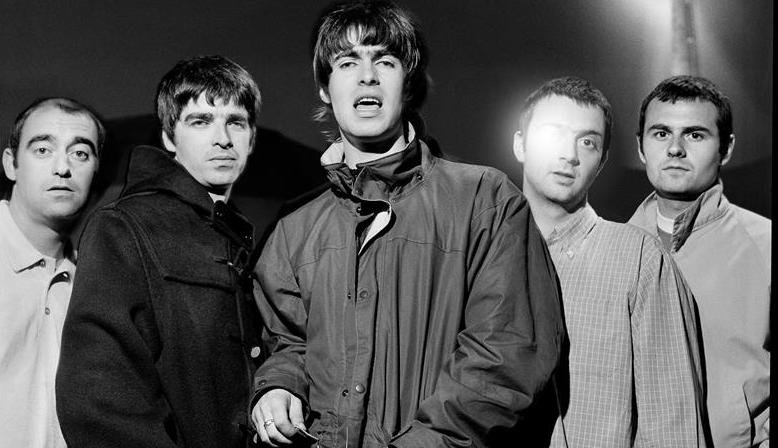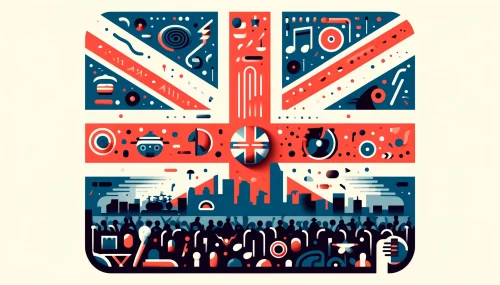The 1990s emerged as a transformative era in UK music, marked by an explosion of distinct sounds that defined a generation and influenced the global music scene. It was a decade of stark contrasts and rebellious spirit, where music was not just entertainment but a cultural statement reflecting the zeitgeist of post-Thatcher Britain. Among the eclectic soundscapes that characterized the decade, two movements stood out for their impact and the cultural waves they created: Britpop and Madchester.
Madchester
Madchester, a scene that bubbled up in the late 1980s and reached its zenith as the 1990s dawned, was more than just a musical genre; it was a cultural phenomenon that blended indie rock with acid house and psychedelia, encapsulating the euphoria and excesses of the rave culture. Centered in Manchester, this movement gave rise to bands like The Stone Roses and Happy Mondays, whose music echoed through the Hacienda club’s legendary dance floors, becoming the soundtrack to a youth movement steeped in party-centric hedonism.
Britpop
In contrast, Britpop emerged mid-decade as a pointed response to the dominance of American grunge. It was a movement that sought to reclaim Britishness in music, characterized by its sharp focus on British cultural themes. Bands such as Blur, Oasis, and Pulp spearheaded this movement, crafting songs that mixed catchy melodies with an introspective look at British society. Britpop became a cultural badge that resonated with a sense of national identity, pride, and a touch of nostalgic reverence for Britain’s past glories.
Despite originating from the same country and within a closely tied time frame, Britpop and Madchester offered distinctly different sounds and cultural reflections. This juxtaposition not only highlights the rich diversity within British music but also showcases how each movement provided its own unique commentary on the social and political climates of the time. As we delve deeper into these iconic musical phenomena, we uncover more than just melodies and lyrics; we explore a rich tapestry of socio-cultural dynamics that helped shape a decade of significant transformation in the UK.
Historical Context

The term “Madchester” is a portmanteau of “Manchester” and “mad,” a nod to the lively, almost frenetic culture that surrounded its music scene. Coined in part by Factory Records’ Tony Wilson, the label itself played a pivotal role in promoting bands associated with this vibrant movement. Madchester was more than just a genre; it represented a period when the city’s music scene underwent a radical transformation, fueled by a unique blend of sounds and an energetic rave culture.
Musically, Madchester was deeply rooted in the post-punk vibrations that dominated the early 1980s, with bands like Joy Division setting a somber, introspective tone. As the decade progressed, these somber rhythms gradually absorbed the sunnier dispositions of psychedelic rock and the emerging euphoria of acid house, creating a hybrid sound that was both entrancing and danceable. This fusion was a response to the gloom of post-industrial Manchester, offering an escapist soundtrack to a youth culture keen on enjoying the hedonistic pleasures of life, despite the socio-economic challenges of the time.
Emergence of Britpop
Britpop’s emergence in the early 1990s was a calculated response to the overwhelming influx of American grunge, which dominated the airwaves and charts across the UK. Bands like Nirvana and Pearl Jam resonated with the British youth, but there was a growing desire for a sound that encapsulated the British experience and identity. Britpop answered this call by drawing on the quintessential British pop of The Beatles, The Kinks, and The Rolling Stones, blending these influences with the contemporary energy and angst expressed in the music of The Smiths and The Jam.
The British media, particularly publications like “NME” and “Melody Maker,” played an instrumental role in defining and promoting the Britpop identity. These outlets not only covered the music but also the burgeoning rivalry between bands like Blur and Oasis, which they framed as a class struggle between the middle-class sensibilities of the south and the working-class pride of the north. This narrative captured the public’s imagination, turning Britpop into a cultural phenomenon that extended beyond music to influence fashion, art, and politics. The media’s portrayal of Britpop as a part of the larger “Cool Britannia” movement helped solidify its place as a defining element of 1990s British culture, symbolizing a renewed sense of national confidence and creativity.
Musical Style and Characteristics

Madchester’s sound is a vibrant fusion of indie rock, psychedelia, and dance music, creating a sonic palette that encouraged its listeners to dance as much as listen. This style emerged as a natural evolution of the city’s earlier music scenes, incorporating the jangly guitar work of post-punk with the rhythmic and electronic influences of the burgeoning rave culture. The result was a sound that was both laid back and energetic, capable of capturing the trippy, euphoric vibe of endless nights spent at the Hacienda, Manchester’s legendary nightclub.
Key bands that epitomized the Madchester sound include The Stone Roses and Happy Mondays. The Stone Roses’ self-titled debut album featured tracks like “I Wanna Be Adored” and “She Bangs the Drums,” which combined melodic hooks with a rhythmic swagger, wrapped in a haze of guitar effects that drew heavily from 60s psychedelia. Meanwhile, Happy Mondays perfected a more eclectic approach with their album “Pills ‘n’ Thrills and Bellyaches,” particularly with songs like “Step On” and “Kinky Afro,” which blended funky rhythms and house music beats with Shaun Ryder’s irreverent lyrics, creating anthems that were both reflective and raucous.
Characterizing Britpop
Britpop was characterized by its catchy melodies, guitar-driven sound, and a distinct emphasis on quintessentially British themes. This genre sought to evoke and celebrate aspects of British culture, often through its lyrical content which ranged from playful and ironic to introspective and critical. The music was accessible yet articulated, designed to resonate with the masses by drawing on the nation’s collective cultural memory.
Key bands such as Blur, Oasis, and Pulp were at the forefront of this movement, each bringing their unique flair to the Britpop identity. Blur’s “Parklife” is an exemplary track that features a quirky, narrative style and vivid storytelling, painting a picture of British life. Oasis’ “Wonderwall” and “Don’t Look Back in Anger” became anthems of a generation with their singalong choruses and powerful guitar riffs. Pulp’s “Common People” delivered a sharp social commentary wrapped in catchy hooks and a pulsing bassline, highlighting class disparity with biting wit and an infectious beat.
Cultural Context and Impact

The cultural impact of Madchester is deeply intertwined with The Hacienda, the iconic nightclub partly owned by Factory Records. This venue was not just a club; it was the epicenter of the Madchester scene, where the sounds of indie rock met the beats of acid house, creating a unique atmosphere that defined an era. The club’s eclectic music policy mirrored Madchester’s musical hybridity, fostering a community that was all-embracing and diverse.
Rave culture was integral to this movement, with its ethos of peace, love, and ecstasy encapsulating the carefree, hedonistic spirit of the time. This cultural shift was reflected in the fashion of the era—baggy t-shirts, bucket hats, flared jeans, and brightly colored sportswear became the unofficial uniform of Madchester enthusiasts, emblematic of the scene’s relaxed and inclusive vibe.
The influence of Madchester extended beyond the confines of the city, affecting not only the music industry but also fashion, nightlife, and youth culture across the UK and beyond. It reshaped Manchester’s image from a post-industrial town to a cultural hotspot, paving the way for future musical innovations and establishing a legacy that contemporary artists continue to draw on.
Culture of Britpop
Britpop occurred during the rise of “Cool Britannia,” a period when British culture was reinvigorated with a sense of national pride and cultural export. This movement coincided with the re-emergence of British nationalism but framed it within a contemporary context that celebrated the UK’s cultural contributions rather than its imperial past. Britpop’s affinity with British identity was palpable, with Union Jack motifs frequently appearing on guitars, drum sets, and album covers, symbolizing a rejuvenated British spirit.
Fashion and visual aesthetics were also critical in defining the Britpop scene. The style was a mix of mod influences, 1960s and 70s glam, and a dose of working-class grit—parkas, mod suits, polo shirts, and Dr. Martens boots all played their part in creating the Britpop look. Bands like Blur and Oasis not only sounded different but also looked distinct, embodying the cool, confident facade of Britpop.
On a larger scale, Britpop significantly impacted British identity and how the nation was perceived internationally. As the music of Oasis, Blur, and others crossed borders, it carried with it an image of the UK as a hub of creativity and cool, countering the previous decade’s narratives of economic strife and social unrest. Britpop helped to position British music once again at the forefront of the global scene, influencing a multitude of artists and music scenes across the world.
Social Commentary and Themes

The lyrical content and themes of Madchester bands were deeply influenced by the socio-economic conditions of Manchester during the late 1980s and early 1990s. This period in Manchester was marked by economic hardship, following the decline of the manufacturing industry, which left a significant portion of the youth unemployed and disenchanted. In response, Madchester music often delved into themes of hedonism, disillusionment, and escapism. The lyrics did not shy away from portraying the gritty realities of life, yet they also celebrated the escapism offered by the rave culture and the euphoric, communal experiences of the music scene.
Songs like “Step On” by Happy Mondays and “Made of Stone” by The Stone Roses encapsulate this blend of gritty realism with an almost hedonistic, carefree zest for life. The music and its surrounding culture provided a means for young people to momentarily escape the harsher realities of their everyday lives, creating an atmosphere where the bleakness of their socio-economic situation was combated with vibrant music and dance.
Social Commentary of Britpop
Britpop’s social commentary was distinctly reflective of British working-class life and broader social issues, often exploring the dichotomy between Northern and Southern identities in the UK. This regional divide was a recurring theme, as exemplified by the rivalry between Blur (from the South) and Oasis (from the North). Their music and public personas became symbols of this cultural and economic divide, with Oasis embracing their Northern, working-class roots and Blur often representing the more middle-class, Southern perspective.
Britpop lyrics frequently addressed themes of disenchantment with the status quo, but unlike Madchester’s more escapist lyrics, they often carried a more direct, confrontational tone. Pulp’s “Common People” is perhaps the most striking example of this, providing a scathing critique of class tourism and the romanticization of the working-class experience by those who do not live it.
Furthermore, the political landscape during the Britpop era, particularly the rise of New Labour, saw several bands and figures within the movement aligning with political causes. The optimism associated with Tony Blair’s leadership mirrored the cultural resurgence that Britpop was part of, leading to endorsements from key figures within the scene. This political engagement marked a stark contrast to the generally apolitical stance of the Madchester scene, embedding Britpop more deeply into the socio-political fabric of the country.
Legacy and Influence

The legacy of Madchester continues to resonate in contemporary music and culture, influencing not just the sound of subsequent bands but also attitudes toward music and nightlife. Its blend of indie rock with dance music elements paved the way for genres like trip-hop and big beat in the mid to late 90s, showcasing a successful model of genre fusion that encouraged others to experiment. Bands like The Chemical Brothers and Massive Attack, though more electronically oriented, drew inspiration from the Madchester ethos of blending diverse musical styles to create something distinctly rhythmic and immersive.
Moreover, Madchester’s impact extended into how music was consumed and celebrated, particularly in its normalization of club culture within the rock and indie scenes. This crossover appeal between rock and dance music broke down barriers, influencing club scenes around the world. The fashion and style that characterized Madchester—baggy clothes, bucket hats, and casual wear—also saw a resurgence in recent years, adopted by new generations who find appeal in the retro aesthetics of the late 80s and early 90s.
Britpop Influence
Britpop’s influence is palpable in the emphasis on British cultural themes that persisted in UK music long after the movement’s peak. It instilled a sense of pride in British music, reinvigorating the national music scene and influencing bands from other countries to adopt similar attitudes towards their own cultural heritage. Bands like Arctic Monkeys and The Libertines were direct descendants of the Britpop era, both in their sound and in their engagement with distinctly British themes and narratives.
The broader cultural impact of Britpop is also evident in its contribution to the global image of the UK as a center of youth culture and artistic innovation. The aesthetic and style of Britpop—with its modish, smart, yet street-savvy fashion—continued to influence fashion trends and youth culture, promoting a blend of vintage and contemporary styles that remain fashionable.
Contemporary Influences
Contemporary bands and artists still draw heavily from the wellsprings of Madchester and Britpop. Artists like Blossoms and The 1975 exhibit clear Madchester influences in their music, mixing catchy indie melodies with synth-pop and rock elements. Meanwhile, newer acts like Wolf Alice and Sam Fender carry the Britpop torch, merging lyrical introspection with an unmistakable British rock sound that echoes the past while forging new narratives.
In both direct and subtle ways, Madchester and Britpop have shaped musical genres and movements not only within the UK but around the world. They provided a blueprint for how music could simultaneously reflect and influence cultural identities, offering a voice to a generation and continuing to inspire artists today to capture the essence of their time just as vividly.
